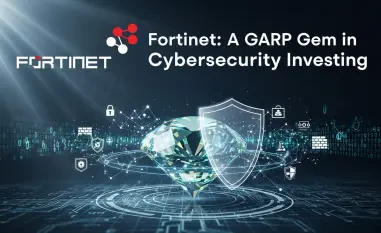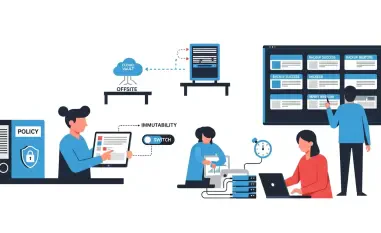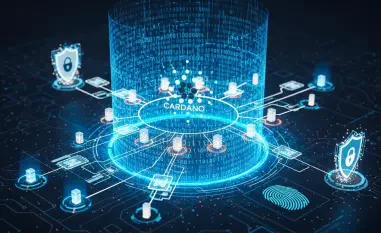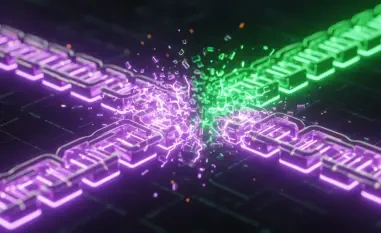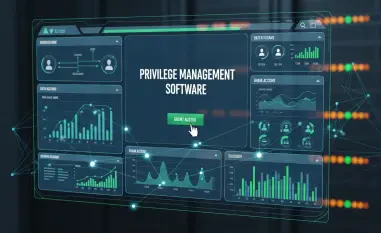Welcome to an insightful conversation on the evolving landscape of cybersecurity with Malik Haidar, a renowned expert in the field. With a robust background in combating digital threats across multinational corporations, Malik brings a unique blend of analytics, intelligence, and security expertise. His focus on integrating business perspectives into cybersecurity strategies makes him a leading voice on Zero Trust architecture, a model that’s reshaping how sensitive data is protected worldwide. In this interview, we dive into the core principles of Zero Trust, its growing importance driven by government mandates, its impact on global standards and industries, and the exciting opportunities it presents for innovative tech companies, particularly in Australia.
What is the fundamental concept behind Zero Trust, and why is it such a game-changer in cybersecurity?
At its heart, Zero Trust is about never assuming trust, no matter who or what is trying to access a system. It’s a shift from the old “castle-and-moat” mindset where once you’re inside the network, you’re considered safe. Instead, Zero Trust insists on continuous verification for every user, device, and request, regardless of location. It minimizes permissions to just what’s needed and keeps a constant eye on sensitive data. This approach is a game-changer because cyber threats today—whether from state actors, criminals, or even insiders—can come from anywhere. With remote work and cloud systems becoming the norm, the traditional perimeter is gone, and Zero Trust fills that gap by focusing on identity and data protection over static boundaries.
How does Zero Trust stand apart from traditional cybersecurity methods?
Traditional cybersecurity often relied on building strong outer defenses—think firewalls and VPNs—and assuming that anything inside was safe. Once a user or device got past those barriers, there was often little scrutiny. Zero Trust, on the other hand, operates on the principle of “verify everything, always.” It doesn’t matter if you’re a CEO logging in from headquarters or a contractor on a personal device; every action is checked. It also emphasizes micro-segmentation, so even if a breach happens, the damage is contained. This continuous monitoring and strict access control make it a much more dynamic and resilient approach compared to the static, perimeter-based models of the past.
What’s driving the rapid adoption of Zero Trust across the globe right now?
A big driver is the evolving threat landscape—attacks are more sophisticated, and the stakes are higher with data breaches costing millions and damaging national security. Governments, especially the US, are setting the pace with mandates like the Department of Defense’s 2027 deadline for Zero Trust adoption, which sends a signal to allies and industries worldwide. On top of that, the rise of remote work and cloud computing has exposed the flaws in older models. Regulators and cyber insurers are also pushing for stricter standards, while high-profile breaches keep reminding organizations that complacency isn’t an option. It’s a perfect storm of policy, technology, and necessity converging to make Zero Trust the new standard.
How are governments shaping the push toward Zero Trust, particularly with initiatives like the US Department of Defense’s 2027 deadline?
Governments are playing a pivotal role by setting hard deadlines and frameworks. The US Department of Defense’s 2027 mandate is a landmark because it doesn’t just apply to federal agencies—it extends to contractors and partners in the supply chain. This creates a ripple effect, forcing thousands of organizations to comply if they want to do business with the US government. It’s a clear message that cybersecurity isn’t optional; it’s a requirement. Beyond the US, this kind of policy sets a benchmark that allies often adopt to maintain interoperability and trust, especially in defense and intelligence sharing. It’s not just about protection—it’s about aligning with a global standard.
In what ways are countries like Australia and NATO members responding to this global shift toward Zero Trust?
Australia and NATO members are definitely taking note of the US push. In Australia, the Cyber Security Strategy emphasizes “secure-by-design” principles, which align closely with Zero Trust’s focus on granular access controls and supply chain security. The Australian Signals Directorate has been vocal about the need for stronger data protection measures, which fits into this model. NATO, meanwhile, has endorsed similar principles to ensure collective defense capabilities aren’t compromised by weak links. These countries see Zero Trust as essential for maintaining strategic partnerships, especially in alliances like AUKUS and Five Eyes, where secure information sharing is critical.
How does the US mandate influence global cybersecurity standards and supply chains?
The US mandate acts like a de facto global standard because of America’s economic and military influence. When the Pentagon sets a deadline like 2027 for Zero Trust, it doesn’t just affect US entities—it impacts every company or country tied into US supply chains, especially in defense and tech. Allies and partners have to align with these standards to stay compatible and competitive, or risk being cut out of contracts and collaborations. It’s a domino effect: global supply chains, particularly in regulated industries, are forced to level up their security practices, which ultimately raises the bar for cybersecurity worldwide, even if it creates short-term challenges for some.
Which industries outside of defense are embracing Zero Trust, and what’s motivating them?
Beyond defense, industries like financial services and healthcare are adopting Zero Trust at a rapid pace. These sectors handle incredibly sensitive data—think personal health records or financial transactions—where a breach can be catastrophic. The motivation comes from both the risk of attacks and external pressures. Regulators, like the SEC in the US or GDPR enforcers in Europe, are demanding better protections and transparency around breaches. Cyber insurers are also playing a big role by incentivizing Zero Trust adoption to lower risk and reduce claims. Even critical infrastructure providers, like energy or transport, are jumping on board because their systems are prime targets for nation-state actors. It’s about survival in a high-stakes environment.
What opportunities does the rise of Zero Trust present for Australian tech companies looking to make their mark globally?
Zero Trust opens up significant opportunities for Australian tech firms, especially given the country’s strong security ties with the US and UK through alliances like AUKUS. Local companies that develop solutions for access control, identity management, or data protection can tap into global defense supply chains by meeting these new standards. Securing a US contract, for instance, acts as a powerful stamp of credibility, helping firms expand into broader commercial markets. Australia’s tech innovators have a chance to carve out niches in specialized areas like attribute-based access control or compliance tools, positioning themselves as trusted players in a growing market.
What challenges do organizations face when implementing Zero Trust, and how can they overcome them?
Implementing Zero Trust isn’t a walk in the park. For large organizations, it often means overhauling existing IT systems, which can be costly and complex. There’s also cultural resistance—employees and even leadership might push back against tighter controls or constant verification. Smaller companies struggle with interoperability, ensuring their solutions work with legacy systems or meet diverse international regulations. The key to overcoming these hurdles is a phased approach: start with critical assets, invest in training to shift mindsets, and leverage partnerships with vendors who specialize in Zero Trust solutions. It’s about building a roadmap that balances security needs with operational realities.
Looking ahead, what is your forecast for the future of Zero Trust in cybersecurity over the next decade?
I believe Zero Trust will become the default framework for cybersecurity within the next decade, not just in defense but across all sectors. As threats grow more sophisticated and digital transformation accelerates, organizations won’t have a choice—they’ll need to adopt this model to survive. We’ll see even tighter integration of AI and automation to handle the scale of continuous verification, making Zero Trust more seamless and less intrusive. Governments will likely double down with stricter mandates, and I expect global standards to converge around these principles, driven by the US and its allies. For businesses and innovators, this is a space ripe with opportunity, but only for those who adapt quickly and prioritize security as a core value.





